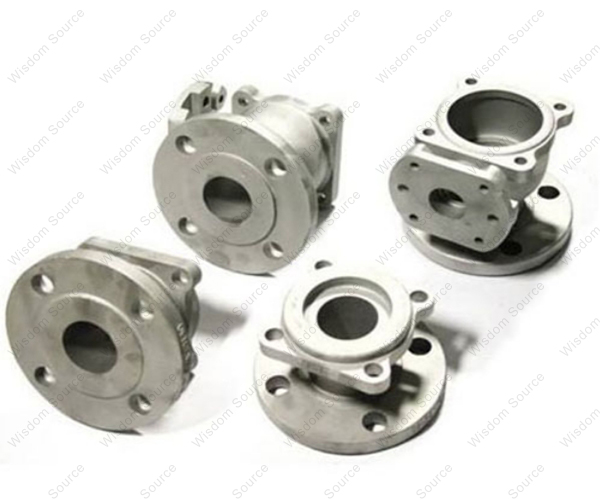Finishing And Performance Improvement Of Titanium Castings: Analysis Of Key Follow-Up Processing
Finishing And Performance Improvement Of Titanium Castings: Analysis Of Key Follow-Up Processing
With its high strength, light weight and excellent corrosion resistance, titanium castings are widely used in high-end fields such as aerospace, shipbuilding, automobile industry, and medical equipment. After the casting is completed, the titanium castings need to go through a series of rigorous follow-up processing processes in order to fully realize their performance potential and meet the stringent requirements of use. The following are the key steps for the correct follow-up processing of titanium castings:
1. Remove The Oxide Film On The Surface Of The Casting
Titanium can easily form an oxide film in the air, which affects the subsequent process effect.
Common removal methods include:
Mechanical Deoxidation: Use grinding wheels, sandpaper and other tools to grind or polish to remove the surface oxide layer.
Chemical Deoxidation: Acidic solutions such as nitric acid, hydrochloric acid, and sulfuric acid are used to dissolve and remove the oxide film.
2. Heat Treatment To Optimize Organizational Performance
Heat treatment is the key process to improve the mechanical properties and organizational structure of titanium castings:
Aging treatment: Keep warm at a specific temperature to promote the formation of a stable structure inside the crystal and improve the strength and hardness of the material.
Annealing treatment: After heating, the cooling rate is controlled to form uniform fine grains, which significantly improves the toughness and plasticity of the material.
Normalizing treatment: After heating and keeping warm, the air is cooled to room temperature, and the hardness and strength of the material are optimized by adjusting the crystal structure.

3. Precision Machining And Forming
In order to meet the precise size and shape requirements, machining is required:
Processing methods: including milling, turning, drilling, reaming and grinding.
Key control: The appropriate cutting speed, cutting depth and cooling method must be strictly selected to ensure the processing quality and dimensional accuracy, and to avoid the processing problems caused by the high strength and high activity of titanium.
4. Surface Treatment To Improve Quality And Corrosion Resistance
The surface treatment is designed to improve the appearance and enhance protection:
Polishing: Burrs and roughness are removed by mechanical or chemical methods to obtain a smooth surface.
Sandblasting: The use of high-pressure gas to spray sand particles, clean the surface and form a uniform texture, and remove the residual oxide layer.
Anodizing: Energized treatment in an acidic electrolyte produces a dense oxide film on the surface, which significantly improves corrosion resistance and surface hardness.
5. Strict Quality Inspection To Ensure Compliance
After the follow-up processing is completed, a comprehensive quality inspection must be carried out:
Inspection items: including appearance inspection, dimensional accuracy measurement, mechanical properties testing (such as strength, elongation), and chemical composition analysis.
Purpose: To ensure that the castings fully comply with the design specifications and use requirements.
6. Standardize Storage And Transportation To Prevent Damage
In order to prevent the treated castings from oxidizing or being damaged again, attention should be paid to storage and transportation:
Environmental requirements: Maintain a dry environment.
Protective measures: Avoid direct contact with other materials to prevent collisions and severe vibration.
The systematic and rigorous implementation of the above-mentioned follow-up processing technology is the key to ensuring that titanium castings obtain excellent mechanical properties, ideal surface state and long service life.These steps are interlocking and together determine the quality and reliability of the final titanium casting product to meet the demanding needs of high-end applications.
